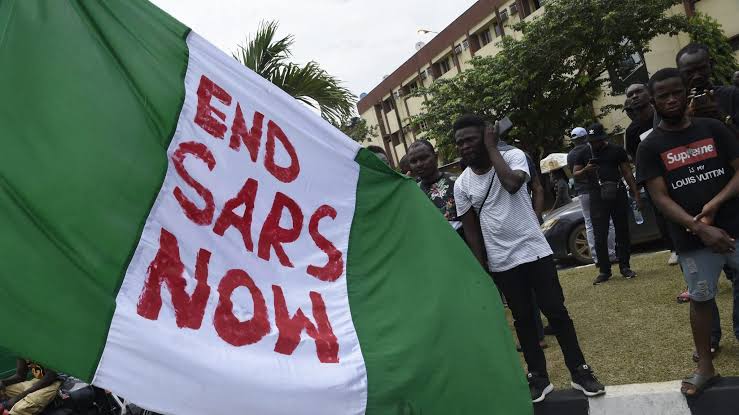In recent times, the #EndSARS protest has been one of the most notable protests held in the history of Nigeria. The protest was staged by young people across the country to advocate against police brutality by the notorious Special Anti-Robbery Squad of the Nigerian Police Force and also chart the course for an end to bad governance.
On 4th October, 2020, young concerned Nigerians took to social media, especially twitter to trend the hashtags: #EndSARS, #EndPoliceBrutality and #ReformThePolice. This was triggered by a viral video of a SARS officer who was seen shooting a young Deltan motorist in Ughelli and pushing his body out of the car and driving away. This incident caused a lot of angry reactions leading to the protest that resulted in the destruction of private and state owned properties, illegal arrest and detention of protesters and the maiming and deaths of so many, especially the massacre at the Lekki tollgate on the 20th of October, 2020.
The Special Anti-Robbery Squad (SARS) is a unit of the Nigerian Police force created in 1992 to fight against robbery, kidnapping, illegal firearms business and other related crimes. However, SARS have continuously failed to carry out the duties for which it was formed. Its officers act with impunity; carrying out extrajudicial killings, rape, extortion and all sorts of crimes, hence Nigerians seeking for reform.
Since he could not participate in the protest physically, Samuel Oluwaseyi, a 300l student at the University of Jos, Plateau State, created a database to archive tweets – text, images and videos from the protests.
“I couldn’t take part in the physical protest, so I felt I should be able to use my skill to support, virtually, hoping that one day, there’d be a need for this database”, Oluwaseyi said.
The Software Developer further stated that, “I was able to archive about 7k tweets, so shortly after the protest, I automated the download of the files, although many of them were deleted by the people who uploaded them, for whatever reason known to them. Sadly, due to my database size, I was only able to archive about 180 images. I know it isn’t so much, and I hope to add more sometime later.”
According to Oluwaseyi, this database has properties like who tweeted what, the tweet, including media files and what time it was tweeted. He put them online for easy access to the public who might be needing them for reference or research purposes.
Access the database here
The database has not been fully uploaded to the cloud, but Oluwaseyi will be glad to share it with you.
You can reach out to him via 09056958763 and samuel@creditsync.com.ng
This UniJos Student Created a Database for #EndSARS Tweets.
Please login to join discussion

































